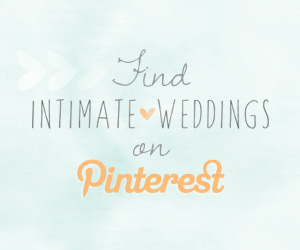It’s everywhere. It’s found in newspapers nationwide. It’s all over the Internet. It’s on Good Morning America. It’s even under your bed – that is, if that’s where you hide that glossy bridal magazine you bought for inspiration.
What is it? The ‘average’ cost of a wedding. The magic number that casts a spell on brides, hypnotizing them into believing that they need to shell out the cost of a 2009 BMW 1-Series sedan to make their wedding day special.
As we speak, the so-called ‘average’ cost of a wedding is just under $29,000, according to the Wedding Report, a trend tracking company that is quoted extensively in the media.
“Look, honey, we’re spending way less than the average,” proudly declares the bride with a $15,000 budget.
What she doesn’t know is that also according to the Wedding Report, four out of five brides were projected to spend less than the $28,704 in 2008 and a full 50 percent will spend less than $14,352.
“Huh?” you say. “How can this be?”
The Wedding Report’s ‘average’ number is a mean – the sum of all wedding costs reported in the surveys divided by the number of surveys. Just a handful of over-the-top weddings and you’ve got an average number that does not reflect the masses.
If this has you scratching your head, take Marc Fuller’s analogy. Fuller is a bridal marketing expert who runs the website Wedding Professional Success.
“If Bill Gates, the founder of Microsoft, walks into a crowded bar … everyone in the bar is instantly a multimillionaire. On average, that is,” he says.
Fuller is not a fan of this method.
“Establishing an average so much higher than what the majority of brides have to spend is amplifying their fears, uncertainties and convincing them that their desires are unattainable … As an “industry” we have helped set up expectations that fewer than 20% of the brides can comfortably be part of. As wedding professionals we need knock that down,” he writes in his blog.
He’s not the only one attempting to debunk this myth. In his column in the Wall Street Journal, Carl Bialik, aka The Numbers Guy, argues that using the mean to portray the “average” wedding is misleading. (The column was written a while ago, but the information is still pertinent.)
“The mean is especially susceptible to a single lavish exception: One $1 million wedding put into the mix with 54 weddings costing $10,000 each would boost the mean to $28,000, although among the 55 couples, $10,000 would seem a much better representation of the typical cost,” he says.
According to Bialik, the median number would be a more accurate reflection of what couples are actually spending on their weddings.
“The median is the middle figure when you line up a set of numbers in order of size. It is a popular choice for social statistics because it is unperturbed by very small or very large numbers,” he writes.
In her book, One Perfect Day: The Selling of the American Wedding, Rebecca Mead (a great book by the way!) argues that this magic number is buried in a bride’s psyche so that shelling out “the average cost of a wedding” is just something that a bride feels she has to do:
“If a bride has been told, repeatedly, that it costs nearly $28,000 to have a wedding, then she starts to think that spending nearly $28,000 on a wedding is just one of those things a person has to do, like writing a rent check every month or paying health insurance premiums.”
Given the recession, there’s no better time to get real about the so-called cost of an average wedding and debunk the $28,704 myth. Because it’s not just a number. It’s a delusion. And that can be a dangerous thing.











